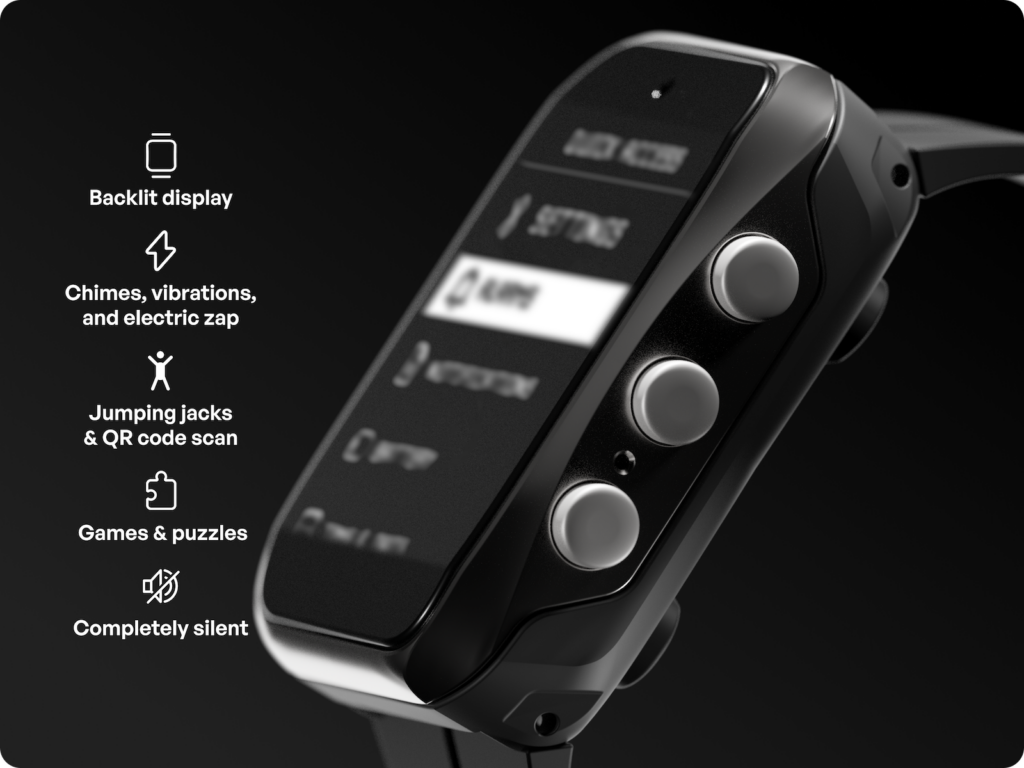
When Shakespeare called sleep the “chief nourisher in life’s feast,” he was onto something.
Scientifically, sleep is a symphony of intricate functions inside our body, when our cells regenerate, toxins get flushed out, and the mind resets.
Additionally, sleep plays a crucial role in regulating mood, aiding metabolism, and strengthening our immune systems. But the benefits don’t stop there. Improved focus, better decision-making, enhanced creativity, and emotional stability are all benefits of sleep.
You see, a quality night’s sleep isn’t just about closing our eyes and diving into dreamland. Each night, our bodies dance a beautifully choreographed ballet through various stages of sleep, and understanding the marvelous mechanics of sleep will not just improve your sleep quality, but your overall quality of life.
Sleep Cycle Symphony: Respect the Harmony
To truly appreciate the necessity of quality sleep, it’s essential to understand the harmonious transitions that naturally occur during our sleep cycle. Sleep is segmented into stages, each characterized by unique patterns of brainwaves detectable using an electroencephalogram (EEG). These stages consist of REM (Rapid Eye Movement) and three non-REM phases: N1, N2, and N3.
The initial stages have shorter REM periods and longer deep sleep phases. As morning approaches, REM sleep prolongs, which is why we sometimes wake up from a vivid dream. However, if your sleep is interrupted during these deeper stages, especially during REM or the N3 stage of non-REM sleep, it can leave you feeling disoriented and groggy.
The Non-REM Stages: N1, N2, and N3
N1 (Transitional Sleep)
As we first drift off, we enter the N1 stage, a bridge between wakefulness and deeper sleep. This stage lasts a few minutes, decreasing your heart rate, muscle activity, and eye movements.
N2 (Light Sleep)
We spend most of our sleep in the N2 stage. While still a light form of sleep, body temperature drops, and our heart rate slows further. During this phase, our body primarily focuses on general maintenance—repairing tissue, growing bones, and rejuvenating muscles.
N3 (Deep Sleep)
This is the most vital phase. It’s during N3 that many essential processes occur, from cell regeneration to the release of growth hormones. This stage is critical for physical restoration and energy renewal. Furthermore, it strengthens the immune system and builds energy for the next day.
The Pinnacle: REM Sleep
Following the three non-REM stages, we embark on the REM phase, the dream center of our sleep. Every 90 minutes, we dive into a REM period, and the REM stage lengthens with each cycle. The mind becomes as active as when awake, yet the body remains relaxed and immobile. This stage is crucial for cognitive functions, aiding memory consolidation, mood regulation, and learning.
Why Sleep Cycles Matter
The ebb and flow of these stages are pivotal for quality sleep and holistic health. A disruption in any stage, especially the deep and REM phases, can drastically affect our cognitive functions and mood. Hence, understanding and respecting the sleep cycle is not just about quantity but about the quality of sleep you get each night.
Cortisol: The Herald of Daylight
Cortisol, often recognized as the “stress hormone,” has a more nuanced role in our daily rhythms. Produced in the adrenal glands, it functions as an alarm system, regulating metabolism, reducing inflammation, and controlling the sleep-wake cycle.
Cues and Production
Cortisol levels rise early, peaking around 8 a.m., preparing the body and mind for the day ahead. As the day progresses, cortisol levels usually drop, reaching their lowest during the early sleep phases.
Balancing Act: Cortisol & Stress
While cortisol’s role in the sleep-wake cycle is essential, its reputation as a stress hormone isn’t unfounded. In response to stress, the body produces higher cortisol levels. Chronically elevated cortisol, particularly in the evening, can severely disrupt sleep.
The Sleep-Wake Ballet
The synchronization of melatonin and cortisol secretion is vital for a healthy sleep-wake rhythm. Ideally, as melatonin levels rise in the evening, cortisol levels should dip, and vice versa in the morning. This counterbalance ensures we feel sleepy when it’s dark and alert when it’s light.
However, our modern lifestyles, often filled with late-night screen time, irregular schedules, and persistent stress, can disturb this delicate dance. The resulting hormonal dissonance can lead to sleep disorders, fatigue, and a host of health issues.
Bookends of Your Day: The Magic of Evening and Morning Routines
Having consistent routines is essential for quality sleep and a thriving life. By establishing routines, our brains become accustomed to what to expect, which creates a calming, synchronous rhythm.
Evening routines help us transition from the busyness of the day to a peaceful state of mind, allowing us to disconnect and mentally prepare for rest.
On the other hand, morning routines are like preparing for a rocket launch. They determine the course for the day. When we harmonize our activities with the body’s internal clock, we unlock a world of potential, maximizing our health, mood, productivity, and overall well-being.
Evening Routines: Prelude to Rejuvenation
The Grind Guru (For Hard Workers):
8 PM: Tech Detox
Devices down! Swap screens for more traditional relaxation methods, signaling the brain to prepare for rest.
9 PM: Calming Bath
A warm soak with Epsom salts and a hint of lavender essential oil ensures muscle relaxation and mind decompression.
10 PM: Reading & Meditation
Dive into a non-work-related book followed by a brief mindfulness meditation to center yourself.
Parenting Pro (For Busy Parents):
8 PM: Kids’ Wind-down
Dim the lights, lower the volume, and set the scene for the kids’ bedtime.
9 PM: Stories & Organizing
Engage with the children through bedtime tales. Afterward, spend 30 minutes setting up for the next day—lunches, outfits, the works!
10 PM: YOU-time!
Whether it’s a gentle skincare routine, a hobby, or just listening to soft music, invest in yourself.
Night Hawk (For Night Owls):
11 PM: Creative Spurt
Channel your energy into jotting ideas or sketching. Harness this creative window to sure-up last-minute concepts and ideas!
Midnight: Ambiance Adjust
Make your surroundings sleep-friendly with dimmed lights and soft background sounds.
1 AM: Wind Down
Relaxation exercises or techniques such as deep breathing or progressive muscle relaxation can help you fall asleep faster.
Morning Routines: Crafting a Day of Triumph
The Grind Guru (For Hard Workers):
5 AM: Embrace the Silence
Bask in the stillness. Hydrate and stretch.
5:30 AM: Invigorate
A short workout works wonders, even if it’s just a few sun salutations or a brisk walk.
6:15 AM: Direction Setting
Plan out the day’s objectives.
Parenting Pro (For Busy Parents):
6 AM: Moments of Solitude
Before the household awakens, engage in silent reflection or journaling.
7 AM: The Bustle Begins
Kids prepped and ready. Share a nutritious breakfast and some quality family time.
8 AM: Personal Reset
A session of light exercise or a brisk walk before embarking on the day’s tasks.
Night Hawk (For Night Owls):
8 AM: Gentle Awakening
No rush. Stretch out and hydrate.
9 AM: Sunlight Synthesis
Spend 15-20 minutes outdoors. Natural light kickstarts metabolism and sets circadian rhythms.
10 AM: Brainstorming Breakfast
A hearty meal coupled with planning the day’s itinerary.
Remember, life’s rhythm is different for everyone. However, tailoring routines to your personal needs ensures optimization of time, energy, and productivity. Evening and morning rituals aren’t just tasks—they’re foundations upon which entire days are built.
Crafting the Perfect Bookends: Introducing Shock Clock MAX
In today’s fast-paced lifestyle, we often overlook the importance of consistent morning and evening routines. Our mornings can become rushed, and our evenings may be filled with distractions.
This is where Shock Clock MAX comes in—a revolutionary sleep device 10 years in the making that can help you reclaim and refine these critical periods of your day.
Transformative Mornings with Shock Clock MAX
Multi-sensory Awakening
Shock Clock MAX is the most versatile wake-up companion on the market, offering multiple ways to help you rise up in the morning. After all, everyone’s waking-up threshold is different.
Shock Clock MAX is the only wearable alarm clock that wakes you up with an electric zap, but lets you tailor its intensity level. It also provides sound options, vibration sequences, and snooze settings. Start with soft vibrations or soothing chimes, and then increase the intensity with a zap!
By the way, the zap is completely silent, so you’ll never disturb your partner (or the dog!). Shock Clock MAX lets you personalize your very own wake-up and morning routine.
Engage with Games, Puzzles, and Exercises
Beyond the invigorating jolt of the electric shock, Shock Clock MAX offers a unique and enriched awakening experience. Play stimulating games, solve puzzles, or perform exercises as a means to disable the alarm and activate your morning brain.
These mini challenges kickstart cognitive and physical activity, ensuring that once you’re up, there’s no snoozing or slipping back into the seductive embrace of your comfy bed.
Bio-Optimized Awakenings
Using the sophistication of its integrated heart rate monitor combined with advanced motion detection, Shock Clock MAX analyzes the nuances of your sleep cycle, pinpointing the most optimal time to initiate your wake-up sequence.
The result? You’re wake up at the pinnacle of your lightest sleep phase, facilitating a more rejuvenating and natural transition from dreamland to reality. With the Shock Clock MAX, mornings are no longer about just getting up; they’re about rising in harmony with your body’s innate rhythms.
Mindful Evenings with Shock Clock MAX
While it may be touted for its morning capabilities, the Shock Clock MAX is equally transformative for evening routines.
Reminders and Alarms
Just as it assists in waking up, Shock Clock MAX can be set to remind you to initiate your evening routine. Whether signaling bedtime, reminding you to take their nightly vitamins, or indicating the time to start a relaxation technique, its multi-sensory approach ensures that your evening routines are consistently followed, too.
Digital Detox and Screen-time Management
The perilous blue light that digital screens emit stands as a prime culprit behind disrupted sleep. But with the Shock Clock MAX, you’re equipped with a solution that champions both convenience, sleep hygiene, and a distraction-free routine.
Shock Clock MAX has a luminous backlit display with all the alarm controls, eliminating the need for your phone entirely. It also comes with a built-in flashlight for those wee-hour bathroom adventures. As a result, you’re not just reducing blue light exposure—you’re actively fostering an environment where melatonin production thrives, and your body seamlessly transitions into its restful state.
Signals, Nudges, and Prompts
Whether it’s signaling the onset of a calming meditation, prompting a light stretch, or nudging you to journal your thoughts, Shock Clock MAX fully integrates with your evening routine to ensure your transition to bed is not just habitual, but holistically tailored to usher you into restorative sleep.
With Shock Clock MAX by your side, you’re not just setting another reminder or an alarm for the morning—you’re crafting a comprehensive evening ritual for optimal tranquility and quality sleep.
Conclusion:
Morning and evening routines are critical pillars of quality sleep. They’re not just about the start and end of our day; they influence everything in between.
Shock Clock MAX, with its proven scientific aversive technology and array of features, promises a holistic approach to quality sleep. By catering to both the start and end of our day, it ensures that you’re not only waking up right but also winding down in a way that promises rejuvenation and restoration. It’s not just a device; it’s a lifestyle companion.
















